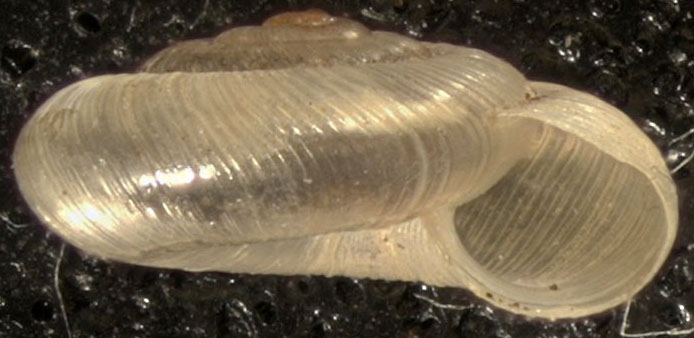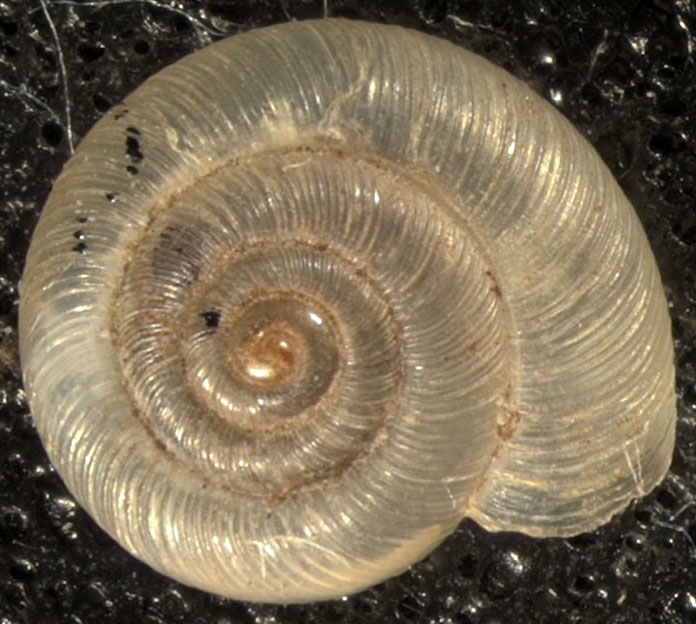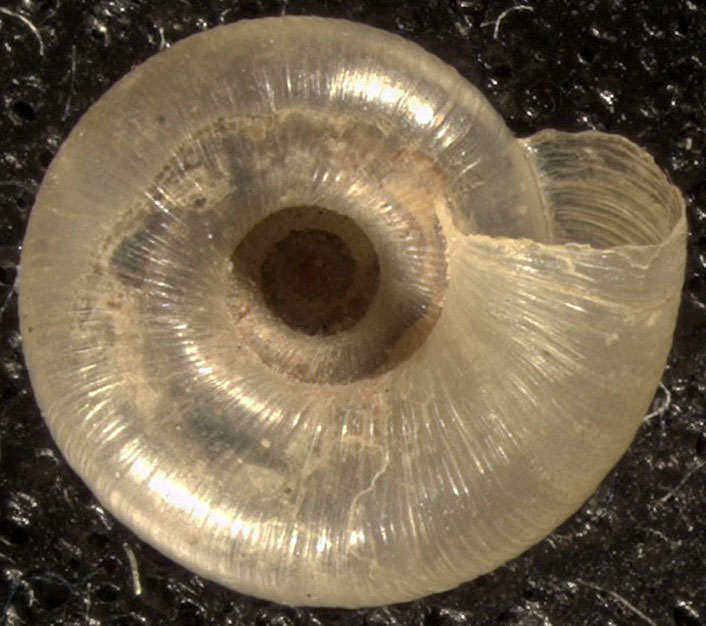
Physical Appearance
Zonitoides
species have a flattened shell in a heliciform (spiral) shape
(White-McLean, 2011). Shells of these invertebrates are
commonly described as “umbilicate,” meaning that it they have a central
indent
resembling a navel.
Adult snails of the genus Zonitoides
have shells that are
less than one centimeter in diameter and about two to four millimeters
in height


Z. limatulus
can be distinguished from similar species by its shell.
This species has a shell that is round and widely umbilicate,
meaning that it has a deep indent in the center of its 4 ½ whorls (Dourson,
2010). It is white to
corneous in color and has a dull appearance, which are two
characteristics that easily set it apart from close relatives such as
Z. nitidus,
the black gloss snail (Burch, 1962).
This snail’s shell also has distinct growth lines near the top,
which fade near the shell’s base (Burch, 1962).